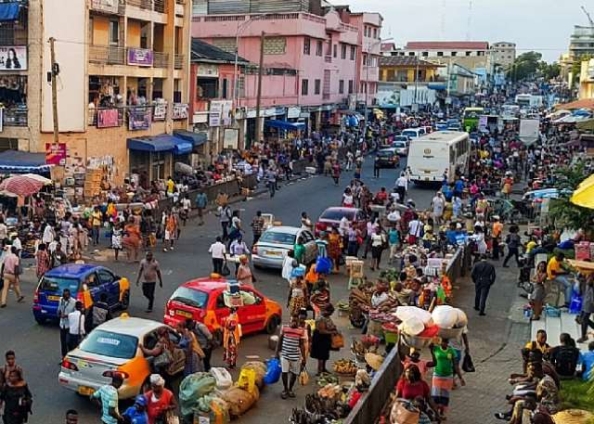The Ghana Statistical Service's (GSS) recent Multidimensional Poverty Index (MPI) report has uncovered significant disparities in poverty rates within the Greater Accra Region.
The Greater Accra region has a relatively low poverty rate of 11.7%, while the Savannah region recorded a starkly higher rate of 49.5%.
The figures underscore the uneven development and persistent poverty challenges within the country.
According to the report, Greater Accra’s household population stands at 5,384,171, with an intensity of poverty measured at 43.3%. intensity metric reveals the severity of poverty among the region’s poor, illustrating how far they fall below the poverty line across multiple dimensions.
The incidence of poverty, or headcount ratio, for Greater Accra is recorded at 11.7%, reflecting the percentage of people experiencing multidimensional poverty in the region.
In an interview with Joy Business, Government Statistician Prof. Samuel Annim elaborated on the factors driving these disparities stating that poverty is endemic in some areas.
“We found pockets of areas within the region that are not performing well. We will go beyond the regional report and narrow down on each district. We are sure we will see intra-district disparities when it comes to multidimensional poverty,” Prof. Annim explained.
He emphasized the importance of addressing unemployment as a critical strategy for reducing multidimensional poverty. “If we really know that reducing unemployment will eventually help us bring down our multidimensional poverty, then this is the right opportunity to do that,” Prof. Annim stated.
Findings of the report
The disparities between the Greater Accra and Savannah regions highlight the urgent need for targeted interventions to address the underlying factors contributing to the differences. The high poverty rate in the Savannah Region reflects a broader challenge of inadequate development and limited access to essential services, which contrasts sharply with the relatively better conditions in Greater Accra.
Key findings from the report highlight that deprivations in employment and health insurance are dominant, with significant variability across the 13 indicators evaluated in the region. Additionally, the education and employment characteristics of household heads were found to be significant contributors to the multidimensional poverty status of households. The report also established intra-regional disparities in access to basic needs within Greater Accra
The MPI is a sophisticated tool developed by the Oxford Poverty and Human Development Initiative (OPHI) at the University of Oxford. Unlike traditional poverty measures, the MPI evaluates poverty through multiple dimensions, including education, health, and living standards, to provide a comprehensive view of the simultaneous deprivations faced by individuals.
The MPI report serves as a crucial tool for policymakers, providing evidence-based insights to formulate and implement more effective poverty reduction strategies. By focusing on the dimensions of education, health, and living conditions, the MPI allows for a nuanced understanding of poverty, which is essential for crafting policies that address the root causes of deprivation.
Latest Stories
-
Prof. Gyampo condemns character assassination, urges national dialogue on Fake News
17 minutes -
EC knows NPP won’t partake in Ablekuma North election rerun – JFK
25 minutes -
Ablekuma North rerun: EC has a lot of questions to answer – Justin Kodua
30 minutes -
Two employees arrested for plotting company robbery in Accra
38 minutes -
R2Bees to headline 8th Shutdown All White Invasion Concert in Minneapolis
38 minutes -
Ningo chiefs reject claims of Igbo Kingdom in Old Ningo, urge Interior Ministry to investigate
42 minutes -
Ghana extends condolences to US over deadly Texas floods
59 minutes -
TT Brothers launches Uncle T Sweet Wines
1 hour -
Ghana’s insurance industry intensifies public education to build trust and boost coverage
1 hour -
Reduce interventions in the forex market – IMF to Bank of Ghana
2 hours -
Hearts of Oak withdraw from pre-season competition in Lagos
2 hours -
Scholarships Authority Bill goes before Parliament, targets eliminating cronyism and nepotism
2 hours -
Engineers & Planners defends $100m Azumah gold mine acquisition, dismisses political claims
2 hours -
Why Ghanaian music struggles to get paid and played
2 hours -
FIFA Club World Cup: Miami’s defense comes undone against high-flying PSG side
2 hours

